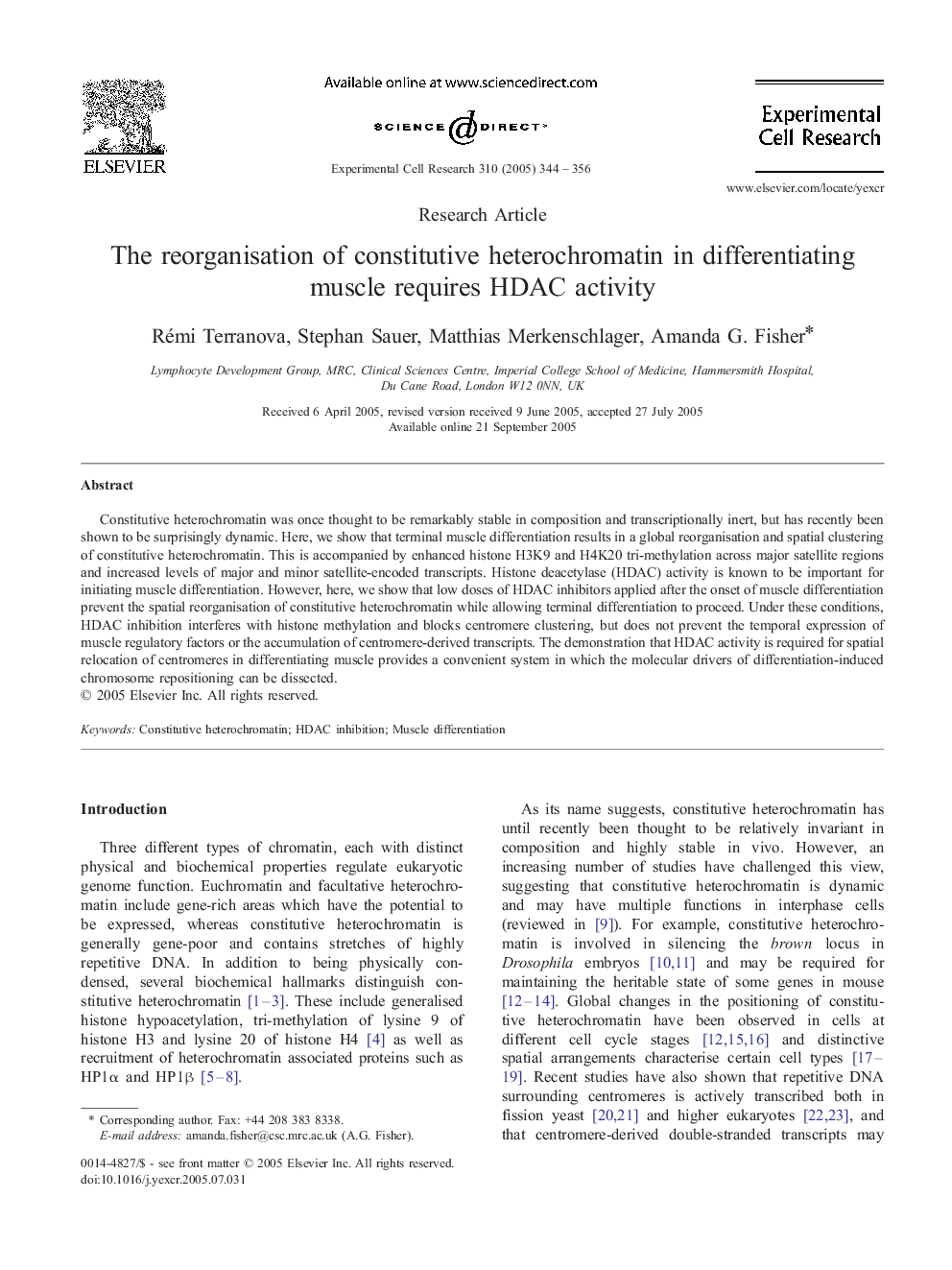| Article ID | Journal | Published Year | Pages | File Type |
|---|---|---|---|---|
| 9908667 | Experimental Cell Research | 2005 | 13 Pages |
Abstract
Constitutive heterochromatin was once thought to be remarkably stable in composition and transcriptionally inert, but has recently been shown to be surprisingly dynamic. Here, we show that terminal muscle differentiation results in a global reorganisation and spatial clustering of constitutive heterochromatin. This is accompanied by enhanced histone H3K9 and H4K20 tri-methylation across major satellite regions and increased levels of major and minor satellite-encoded transcripts. Histone deacetylase (HDAC) activity is known to be important for initiating muscle differentiation. However, here, we show that low doses of HDAC inhibitors applied after the onset of muscle differentiation prevent the spatial reorganisation of constitutive heterochromatin while allowing terminal differentiation to proceed. Under these conditions, HDAC inhibition interferes with histone methylation and blocks centromere clustering, but does not prevent the temporal expression of muscle regulatory factors or the accumulation of centromere-derived transcripts. The demonstration that HDAC activity is required for spatial relocation of centromeres in differentiating muscle provides a convenient system in which the molecular drivers of differentiation-induced chromosome repositioning can be dissected.
Related Topics
Life Sciences
Biochemistry, Genetics and Molecular Biology
Cancer Research
Authors
Rémi Terranova, Stephan Sauer, Matthias Merkenschlager, Amanda G. Fisher,
